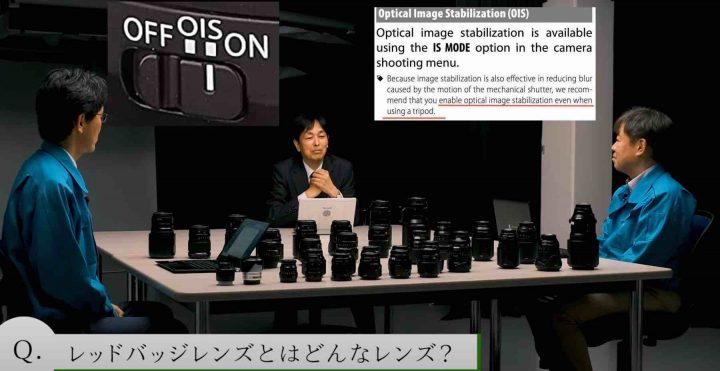Fujifilm Secret Development Story: Talking Fujinon Glass and Why OIS Switch was Removed on Some Lenses

Fujifilm published a new episode of their secret development story.
This time they talk about Fujinon lenses, more precisely about AF motors, lens perfection vs lens character and also about optical image stabilization.
They also explain why they removed the OIS switch on some lenses, and that the notion that you should always turn it off when shooting on a tripod is no longer accurate.
This is something we already said in the past, but Fujifilm goes a bit more in depth about it today. However, this is all automatically Google translated by YouTube, so while I did my best to try to get it summarized for you guys (with my son trying to climb on me while I was reading and typing), if any FR-reader has some skills in Japanese and would like to sum it up better for us, feel free to do so and share your recap in the comments down below or via email at fujirumor@gmail.com.
- Red Badge lenses: great image quality and fast autofocus. Also weather resistant
- red badge lenses represent Fujifilm’s highest technical level, flagship lenses
- first red badge lenses where Fuji’s constant f/2.8 zooms
- then came the XF200mmF2, and extraordinarily amazing lens
- XF50mmF1.0 emphasis is on smooth bokeh rather than on ultimate resolution
- the new 18mmf/1.4, 23mmF1.4 and 33mmF1.4 focus on resolution
- Fujifilm tries to give lenses a different character, based on their purpose of use [and as the Sigma CEO said, making a perfect lens is way easier than making a lens with character. Which is why I LOVE my good old XF35mmF1.4 R – see it in action here in Barcelona]
- then Fujifilm explains what the various markings on the lens mean
- R for aperture ring, LM for linear motor, OIS for optical image stabilization and WR for weather resistance
- autofocus speed is getting faster and faster
- there are also other AF motors, like stepping motors, DC motors etc [Fuji Guy Billy elaborated them all very nicely here]
- you have to place the AF motor in a way that it won’t create shake in the lens
- linero motor is the smoothest and fastest AF motor option [and of course it has its downsides too, as Fuji Guy Billy explained here]
- some Fujinon lenses have lost the OIS switch (for example the XF70-300mmF4-5.6 and the the XF16-80mmF4)
- usually it is recommended to switch off OIS when shooting on a tripod
- but on some lenses Fujifilm now recommends to keep OIS turned ON when shooting on a tripod
- but honestly, the time when it’s better to keep OIS on or OFF when shooting on a tripod is not so easy to determinate and it’s actually quite complicated
- Fujifilm has developed a system where the camera will decide if it is better to keep optical image stabilization ON or OFF
- please let the camera decide how to deal with OIS
- Fujifilm did remove the physical OIS switch on the lens to make sure it is the camera to take the decisions [but you can always turn it off in the menu, if you want to have control over it]
You can see the full video down below.

